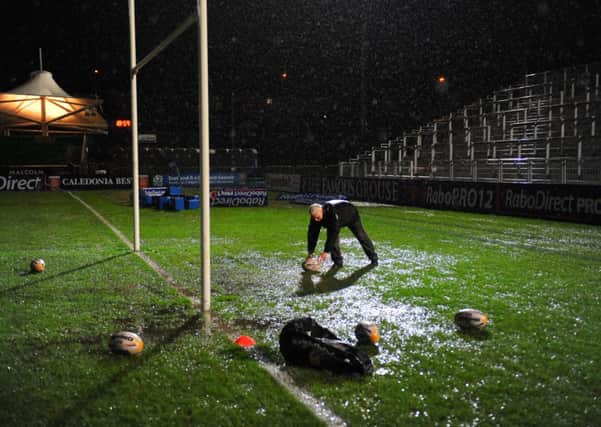Allan Massie: Rugby has no need for summer season


Nevertheless it won’t happen – not in the near future anyway – and you can bet that if it was decided to take a mid-season break in December and January, we would have two months of dry mild weather. It’s also the case that the only time in memory that our pitch at Philiphaugh was under water came in midsummer.
People sometimes talk as if Southern Hemisphere teams are superior because they always play in better weather. Well, quite often they do, but not always. When Scotland beat Australia in the summer of 2012, conditions were every bit as vile as anything experienced here in the last month. The RWC semi-final between South Africa and France in 1995 was almost called off because the ground was waterlogged. One can remember several Test matches in New Zealand played in appalling conditions, Roger Baird for instance scoring a water-splashing try for the Lions in the third Test in 1983.
Advertisement
Hide AdAdvertisement
Hide AdAmateur club rugby here might well struggle if played in the summer, simply because there would so many other calls on players, and other attractions for spectators. In any case rugby has always been a game for all varieties of winter weather as well as one for all shapes and sizes of players. One remembers how Wales’ first home match of the old Five Nations championship was generally played in the deep mud of the old Cardiff Arms Park, while we were always happy in the years when we had France first up in the finger-nipping chill of a grey January afternoon.
Meanwhile there is uncertainty and, in some quarters, concern about the SRU’s proposals for an elite semi-pro club league. First, no-one is quite sure what is meant by semi-pro, but the suggestion seems to be that clubs would have some four fully professional players, whose salaries would be paid, or at least heavily subsidised, by the SRU. This certainly makes better sense than having teams composed of part-time professionals. After all the most significant difference between professional and amateur rugby players is the time professionals spend on the training field or the gym. Nobody holding down a full-time job outside the game, or probably even a part-time one, could match this.
It’s fairly clear from results in the British and Irish Cup that the gulf between Scottish clubs and those from the English championship (increasingly professional outfits) is both wide and deep. The question is, of course, how many players would actually move from a semi-pro league to the professional clubs. Though a fair number of players in the English Aviva Premiership do start their career with clubs in the lower leagues, most who do so are snapped up by the Premiership clubs when they are in their late teens. Meanwhile these clubs also have their own academies. As a general rule I would say it’s rare for players, other than front-row forwards, who tend to develop later, to be successful in the professional game if they haven’t been introduced to it before they are 20.
It should be said that the SRU’s proposal has dismayed officials of clubs at the level immediately below the likely elite group – and indeed at clubs a rung or two lower still. Many well-run clubs now have their development officers and their youth section, neither cheap to maintain. Some will ask themselves whether such expenditure is justified if their most talented young players – some of whom will nevertheless fail to make the professional grade – are lured away to the semi-pro league. Such clubs also fear – again with good reason – that they would then experience a drop in membership and therefore in income.
Raising such objections is not an example of dog-in-the-manger selfishness. The SRU itself has designated amateur club rugby “the community game”, and if it becomes less attractive because young, talented players are lured away, it will serve the community worse. Club rugby depends for its very existence on the enthusiasm of members who serve on committees, accompany junior teams to matches, man the gate (if there is gate-money to be taken) and do all sorts of necessary but unglamorous tasks to keep the club in being. One of their rewards is seeing the club’s young players develop so that a good team can be put on the field. Of course, at all levels of the game some youngsters will move to stronger clubs, and this has always been the case. But it is not something that has been engineered or even overtly encouraged by those at headquarters in Murrayfield.
What is proposed might work. Equally, however, it might do considerable damage to the amateur game without bringing any notable benefit to the professional one. Certainly many will think that any money spent by Murrayfield on a semi-pro league might be put to better use reviving the much-needed third pro club. Ultimately, of course, since the clubs are the SRU, this proposal will have to be endorsed by them at the agm. My guess is that enthusiasm will be restricted to the handful of clubs that will expect to benefit from it.